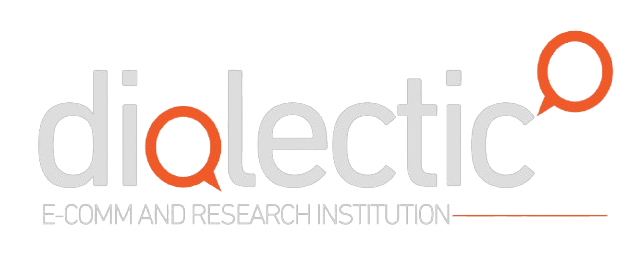أطلقت الأمم المتحدة في العام ٢٠١٥ أجندة ٢٠٣٠ للتنمية المستدامة ليصبح هذا الشعار الأكثر تداولا بهدف جذب اهتمام المؤسسات الدولية في دعم مشاريع الحكومات والمؤسسات الخاصة ومؤسسات المجتمع المدني حول العالم. وعلى الرغم من الحملات الترويجية المستمرة، لا يزال هذا المصطلح مبهما لدى شريحة لا يستهان بها من المواطنين من كلّ القطاعات، في حين يجب أن يتحوّل هذا المصطلح إلى ثقافة وممارسة يومية لدى كلّ فرد من المجتمع. ولكي يصبح الشعار فعلا حقيقيا وعمليّا، يتناول هذا المقال عرضا تاريخيا لانطلاق مفهوم التنمية المستدامة والنقاشات التي رافقت تطوّره حول معاني هذا المصطلح وحيثياته الاقتصادية والاجتماعية والسياسية وصولا إلى اليوم. يهدف هذا العرض إلى تقديم تعريف وتوضيح علميّ لتطوّر التنمية المستدامة كمصطلح ومبدأ لوضع خارطة طريق واضحة وصحيحة تطال كافة فئات المجتمع للوصول الى تطبيق فعليّ، خاصة أن تقارير الأمم المتحدة الأخيرة أشارت إلى أن التنمية ما تزال غير مطبّقة في معظم البلدان لا سيما في لبنان وغيره من دول العالم العربيّ أو ما يعرف بدول العالم الثالث لأسباب عدة أهمها غياب الرصد والاحصاء والمناصرة الفاعلة للتنمية. من هنا، ستقوم "دياليكتيك" في المرحلة المقبلة بدراسة هذه الأسباب والعمل على تقديم اقتراحات ومبادرات ودراسات وخطط حول فرص تحقيق تنمية مستدامة فعلية في هذا القطاع.
موظف ألماني يطلق التسمية
ظهر مصطلح التنمية المستدامة للمرة الأولى في القرن السابع عشر في أوروبا عبر كارل فون كارلويتز، وهو موظف ألمانيّ كان مسؤولا عن استخراج المعادن (التعدين) في محكمة ساكسونية في فرايبرغ في ألمانيا. انتقد كارلويتز الاستغلال المفرط للغابات وتخريبها لاستخراج وصناعة المعدان ما دفعه لابتكار فكرة “الاستخدام المستدام" للغابات بحيث دعا الى تقطيع عدد كبير من الأخشاب التي يمكن إعادة زراعتها وتنميتها من خلال مشاريع تشجير بطريقة منظمة. نظرية الإستدامة التي طرحها كارلويتز، قامت على مبدأ أن الإنسان لكي يستمر بالاستفادة من الموارد الطبيعية، أي "استدامة الاستخدام"، عليه أن يضع خطط منظمة ومدروسة وإلا فإن هذه الموارد ستزول مع الوقت ولن تعود متوفرة. هذه النظرية كانت بمثابة جرس الإنذار الأول للإنسان بضرورة التخلي عن فكرة التفوّق على الطبيعة وضرورة العيش وفق قواعدها التي تضمن استدامتها، أي استمراريتها وحفظها من الدمار.
النموّ السكاني خطر على البيئة
استمرت النقاشات حول ضرورة تفسير مبدأ ومصطلح التنمية وتطويره لمواكبة التحديات المتزايدة التي بدأت تتكوّن ملامحها على كافة الأصعدة. ولعلّ النقاش الأبرز الذي هيمن لسنوات طويلة هو حول ما إذا كانت "موارد الأرض المحدودة تستطيع مواكبة النموّ السكاني". فبين الأعوام ١٧٨٩ وبدايات ال١٨٠٠، حذّر بعض العلماء من "خطر الازدياد السكاني السريع الذي يرجّح أن يفوق قدرة الموارد الطبيعية على تأمين احتياجات هذا الازدياد". كتب كارل بولاني، وهو سياسي سابق في المجر وعالم اقتصادي ويعتبر من أبرز العلماء في الاجتماع والاقتصاد في القرن العشرين: "الاستدامة تمثّل الحماية الذاتية للمجتمع ضد القوى التخريبية للسوق.
من هنا، حذّر العلماء من مأساة ستحلّ على البشر في حال لم تتخّذ إجراءات لمراقبة معدلات النموّ السكاني المتسارعة. كما أن الخوف من الانهيار المالي نتيجة المشاكل الاقتصادية التي تزايدت في القرن الواحد والعشرين جعل مبدأ الاستدامة يستهدف كلّ ما هو قابل للانهيار في المجتمع.
في العام ١٩٧٢، بدأ النقاش حول ما إذا كان الاقتصاد العالمي "مستدام" من خلال دراسة بيانات وإحصاءات حول معدّلات النموّ، والإنتاج الصناعي، والتلوّث. والمحطّة الأبرز في هذا العام كانت اعتماد الأمم المتحدة رسميّا مصطلح التنمية المستدامة في مؤتمر "بيئة الإنسان" والذي عقد في مدينة ستوكهولم.
وفي العام ١٩٨٧، أعادت "اللجنة العالمية للبيئة والتنمية" الدعوة لحقيق التنمية المستدامة في ما عرف ب"تقرير برانتدلاد" (على اسم رئيسة اللجنة غرو هارلم برانتدلاند، رئيسة وزراء النروج آنذاك) بعنوان "مستقبلنا المشترك". هذا التقرير كرّس مصطلح "التنمية المستدامة" ليصبح الإطار الرسمي لعمل الأمم المتحدة لتحقيق الركائز الثلاثة التي قامت عليها التنمية وهي:
١.النموّ الاقتصادي الذي يحقّق الاقتصاد المستدامة
٢.الحماية البيئية التي تحقق البيئة المستدامة
٣.العدالة الاجتماعية التي تحقق الاستدامة المجتعمية
أجندة ٢١
في العام ١٩٩٢، توجّت المؤتمرات والخطط والنقاشات بإطلاق "خطة ٢١" في مؤتمر الأمم المتحدة حول التنمية المستدامة. ومن أهم توصيات المؤتمر التشديد على "ضرورة أن تصبح التنمية المستدامة أولوية على أجندة المجتمع الدولي وبضرورة أن تحاكي الاستراتيجيات الوطنية الجوانب الاقتصادية، والاجتماعية، والبيئية للتنمية المستدامة".
خطة جوهنسبرغ Johannesburg Plan
أما في العام ٢٠٠٢، فقد هدفت "القمّة العالمية للتنمية المستدامة" والذي عرف ب "ريو+١٠" في جوهانسبرغ إلى مراجعة "التقدّم في تحقيق نتائج مؤتمر الريو للأرض حول أجندة ٢١ عبر وهو ما عرف ب"خطة جوهنسبرغ".
وفي العام ٢٠١٢، ركّز "مؤتمر الأمم المتحدة للتنمية المستدامة" والذي عرف ب"ريو+٢٠" على عنوانين لتحقيق التنمية المستدامة وهما:
١.الاقتصاد الأخضر
Green Economy
٢. الإطار المؤسساتي
وقد صدر عن المؤتمر وثيقة بعنوان "المستقبل الذي نريده"، ومن توصياتها في" كيفية إدارة الموارد المستدامة بهدف تحقيق النموّ المستدام للمجتمعات المستدامة" الاهتمام بكيفية الاستفادة من الأرض، حسن إدارة المياه، الأنشطة الزراعية، حسن استخدام الطاقة، التعليم، تحقيق الفرص المتساوية، تطوير وتطبيق القوانين.
منذ تبنّي مبدأ التنمية المستدامة في القرن السابع عشر وصولا إلى إطلاق أجندة ٢٠٣٠ في العام ٢٠١٥ وما رافقها وتلاها من مؤتمرات، لا تزال تقارير الأمم المتحدة تتحدّث عن فجوات بين توصيات المنظمات حول كيفية تحقيق التنمية المستدامة والواقع لأسباب عدة، وما تزال النقاشات حول الحاجة لوضع إطار عملي أوضح لخطط التنمية.
مصادر:
Enders, Judith C., Remig, Moritz (eds.) (2015). Theories of Sustainable Development. Routledge: London AND NEW YORK.
Mensah, Justice, “Sustainable development: Meaning, history, principles, pillars, and implications for human action: Literature review”, Cogent Social Sciences, (2019) 5: 165351.

التنمية المستدامة
نسلط الضوء على المبادئ والممارسات التي تساهم في بناء مستقبل أكثر استدامة للأجيال القادمة.
عرض جميع المدونات >

0 التعليقات
اترك ردًا
لن يتم نشر عنوان بريدك الإلكتروني. الحقول المطلوبة مميزة بعلامة *